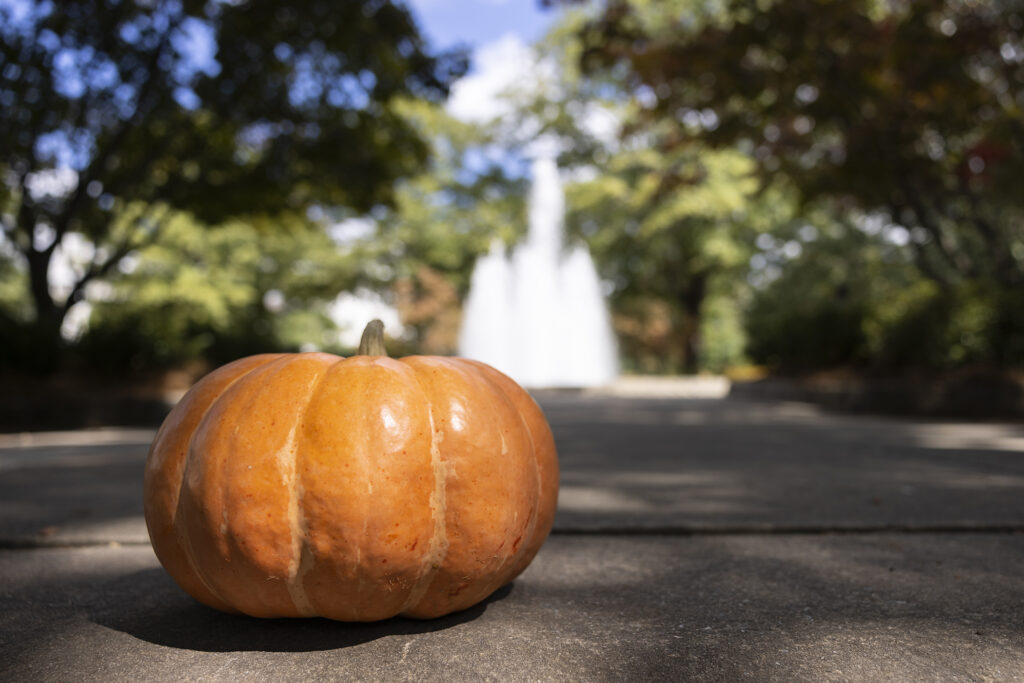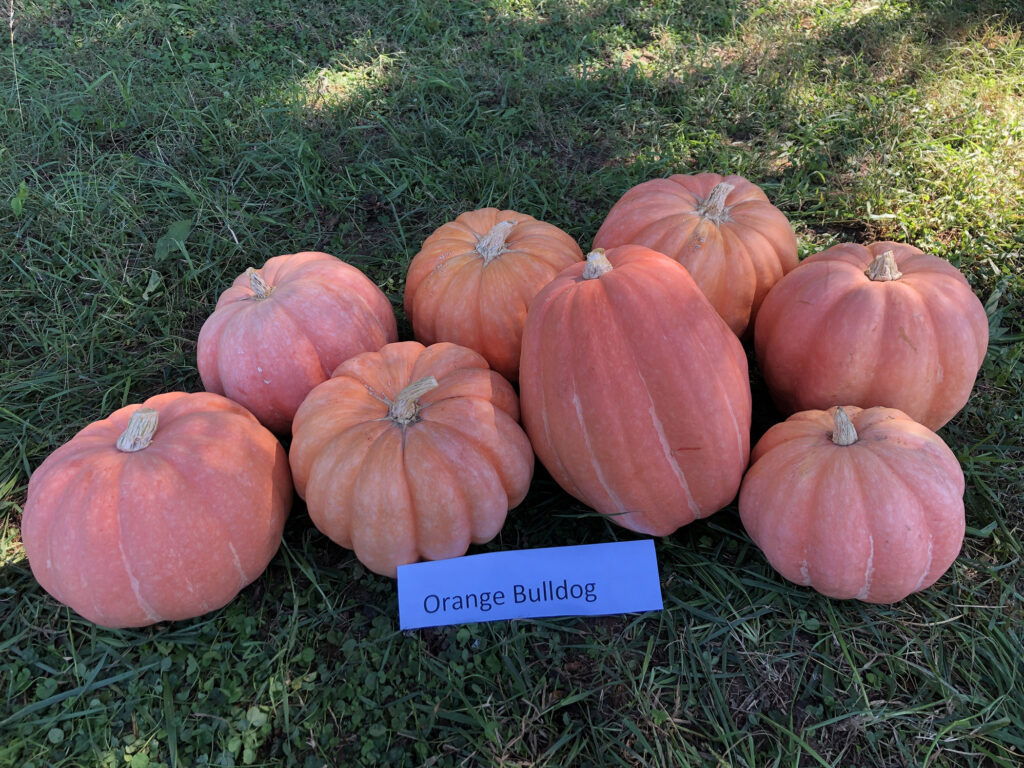The quest for the perfect pumpkin each fall doesn’t start at the local patch. In fact, it starts up to 10 years prior for researchers like University of Georgia plant geneticist Cecilia McGregor. McGregor leads breeding efforts in the selective pumpkin variety called the “Orange Bulldog,” following the retirement of the program’s founder, horticulturist George Boyhan.

A UGA developed Orange Bulldog pumpkin at Herty Fountain. (Photo by Chamberlain Smith/UGA)
For plant breeders, 10 years is the average time it takes to see a new variety through the trial process. Using trials, researchers like McGregor and Boyhan select desired plant traits, breeding from the best of the bunch each growing season until assured the new variety “breeds true,” or produces a standardized plant.
It’s through trials like these that UGA Cooperative Extension vegetable specialist Tim Coolong gathers data to share with Georgia’s farmers and producers. As Extension agents hear there is interest in a certain crop from their local farmers and producers, they bring that inquiry to researchers like Coolong. And lately, pumpkins are all the rage.
That’s what inspires Coolong and his team to trial different pumpkin varieties.
Pumpkins can be tricky to grow
Pumpkins, it turns out, are not a crop for the faint of heart, especially in Georgia. From the more common downy and powdery mildews to plectosporium blight, disease affects many pumpkins. Add the humidity and heat of Georgia’s summers and disease pressures only increase for these already vulnerable plants.
Arguably, the most challenging part of pumpkin producing is fighting seasonality. Despite the increased pressures from summer heat, the majority of the pumpkin growth cycle occurs during the summer so they can be harvested in time for autumn celebrations. “On Nov. 1, a jack-o’-lantern pumpkin isn’t worth much, so we aim to harvest in late September to early October,” explained Coolong. “That means we have to plant pumpkins in the summer, growing them during the most challenging conditions.”

An Orange Bulldog pumpkin at the Main Library. (Photo by Chamberlain Smith/UGA)
While Coolong and his team trial several varieties of pumpkins, they focus on breeds considered “traditional jack-o’-lantern” pumpkins. They carefully document disease-resistance, while also noting traits that comprise the ideal jack-o-lantern. Beyond bright orange color and round shape, they think about traits related to carving, selecting for suture (groove) depth and density. Even the color and stability of the “handle” or stem of the pumpkin is a deciding factor, selecting for form and function.
Public demand for pumpkins fuels this process.
“The public often doesn’t realize the hard work it takes and the long journey these pumpkins make before decorating their doorstep each fall. Farmers, producers and researchers invest an incredible amount of time, effort and resources in growing these pumpkins,” said Coolong.
The ‘Orange Bulldog’ is quite disease resistant
For farmers not ready to invest in this process but interested in pumpkins, Coolong suggests starting with the “Orange Bulldog” variety developed by UGA plant breeders.
“This variety is not the typical jack-o-lantern, appearing more like a large gourd, ranging in color from salmon to burnt orange,” explained McGregor, leader of the current breeding program. “The ‘Orange Bulldog,’ however, reigns supreme in its disease-resistance.”
By limiting disease pressure, the “Orange Bulldog” provides a less labor-intensive alternative for Georgia’s farmers. This trait makes it less dependent on fungicide and pesticide treatment and makes for a more sustainable crop.
The quest continues, however, for the perfect pumpkin.
McGregor and her team plan to continue selecting for different varieties from “Orange Bulldog” with the hopes of creating more standardized fruit characteristics, including a variety with salmon-colored fruit. In the meantime, UGA-bred ‘Orange Bulldog’ seeds are available to farmers.










